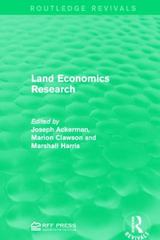Question
1. Answer the following questions by collecting data from Hong Kong, the US, China, and India: (a) Plot the average real GDP growth rate since
1. Answer the following questions by collecting data from Hong Kong, the US, China, and India: (a) Plot the average real GDP growth rate since 1970. (b) Plot the average real GDP per capita growth rate since 1970. (c) Calculate the average GDP growth rate since 1970. (d) Calculate the average GDP growth rate from 1970 to 1990, from 1991 to today. 2. Assume an economy with a car manufacturer, a car seller, and some consumers (there is no government). The consumers are workers who earn a wage to finance their consumption. In a given year, the car manufacturer produces 200, 000 cars and sells them for $10, 000 per car. The workers' wages take up 70 percent of the car manufacturer's revenue. All the materials used for producing cars are imported from other countries at a cost of $1, 000 per car. Half of the manufactured cars are exported oversea and the remaining cars are sold to the domestic car seller. The car seller sells the domestic cars and imported cars at the same price of $15, 000 per car. The car seller sells all of the domestic cars and 5, 000 units of the imported cars to domestic consumers. After paying $5, 000 for the cost of an imported car, the remaining sales revenue is equally distributed between wages and profits. (a) Calculate GDP using i. the product approach, ii. the expenditure approach, and iii. the income approach. (b) Suppose that the car manufacturer is a foreign entity and all its profits belong to foreigners. What would GNP and GDP in this economy be in this case? 3. Suppose that a consumer can earn a higher wage rate for working overtime. That is, for the first q hours the consumer works, she receives a real wage rate of w1, and for hours worked more that q, she received w2, where w2 > w1. Suppose that the consumer pays no taxes and receives no nonage income, and she is free to choose hours of work. (a) Draw the consumer's budget constraint, and show her optimal choice of consumption and leisure. 1 (b) Show that the consumer would never work q hours, or anything very close to q hours. Explain the intuition behind this. (c) Determine what happens if the overtime wage rate w2 increases. 4. Consider a utility function that is consumption and leisure are perfect complements: min(c, `), where > 0. (a) Suppose that the consumer has one unit of time, w = 0.75, = 0.8, and T = 1.0. Determine the consumer's optimal choice of consumption and leisure, and show this in a diagram. (b) Now suppose that wage double, i.e. w = 1.5. Again, determine the consumer's optimal choice of consumption and leisure, and show this in your diagram. Explain how and why the consumer's optimal consumption bundle changes, with reference to income and substitution effects. 5. Consider a utility function: U (c, `) = (1 ) log (c) + log (`), where > 0. (a) Suppose that the consumer has one unit of time, w = 0.75, = 0.8, and T = 1.0. Determine the consumer's optimal choice of consumption and leisure, and show this in a diagram. (b) Now suppose that wage double, i.e. w = 1.5. Again, determine the consumer's optimal choice of consumption and leisure. Use a graph to show how and why the consumer's optimal consumption bundle changes, with reference to income and substitution effects. 6. As in the Hong Kong tax code, we can think of the representative consumer faces a wage income tax with a standard deduction. That is, the representative consumer pay no tax on wage income for the first x units of real wage income, and then pays a proportional tax t on each unit of real wage income greater than x. Therefore, the consumer's budget constraint is given by c = w(h `) + if w(h `) x, or c = (1 t)w(h `) + tx + if w(h `) > x. To simplify the question: let's assume = 0. Assume Hong Kong government cut proportional tax, analyze the changes on consumption and leisure by using income and substitution effects.
Step by Step Solution
There are 3 Steps involved in it
Step: 1

Get Instant Access to Expert-Tailored Solutions
See step-by-step solutions with expert insights and AI powered tools for academic success
Step: 2

Step: 3

Ace Your Homework with AI
Get the answers you need in no time with our AI-driven, step-by-step assistance
Get Started


